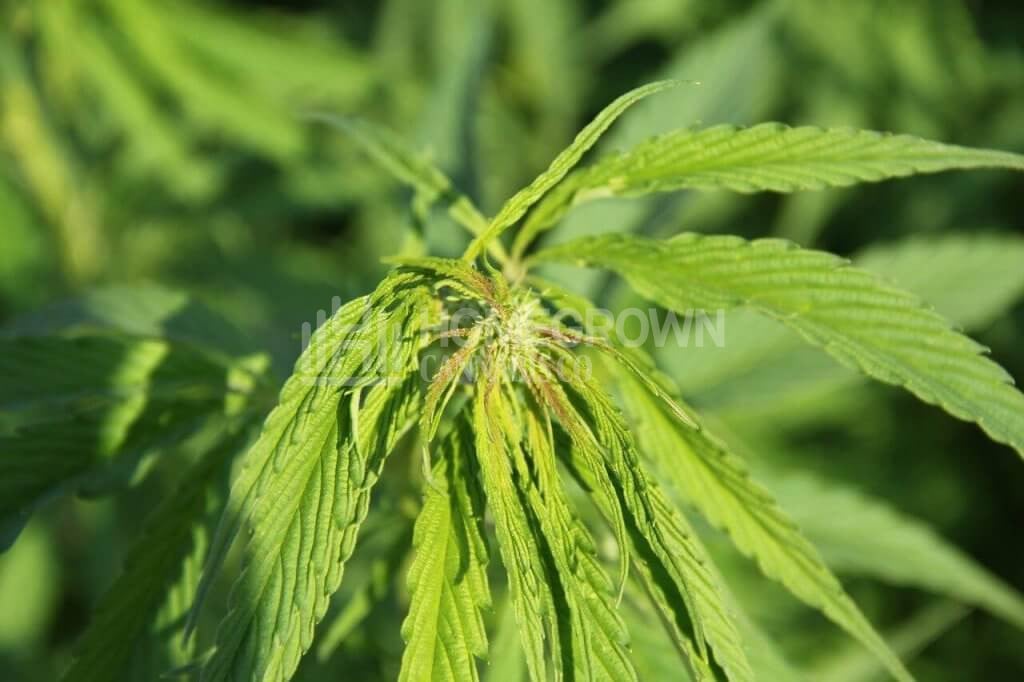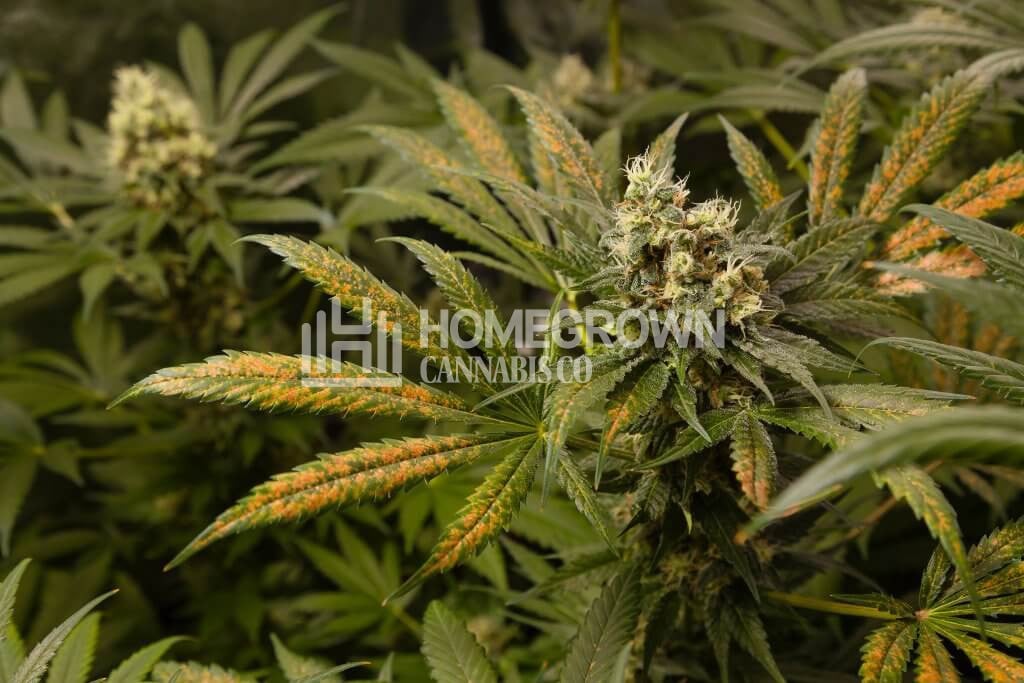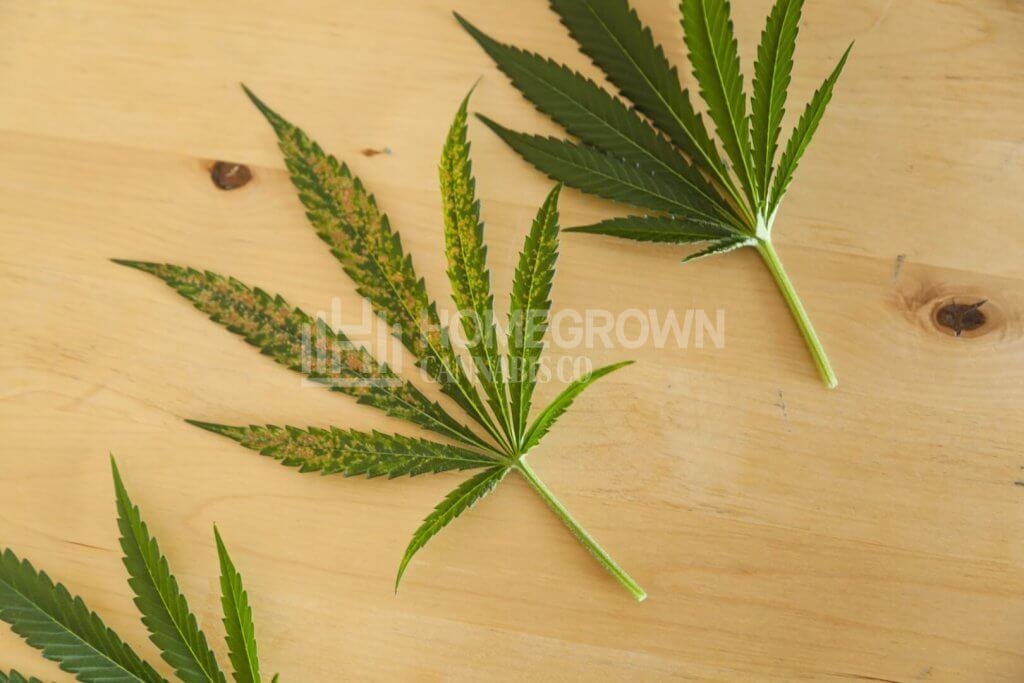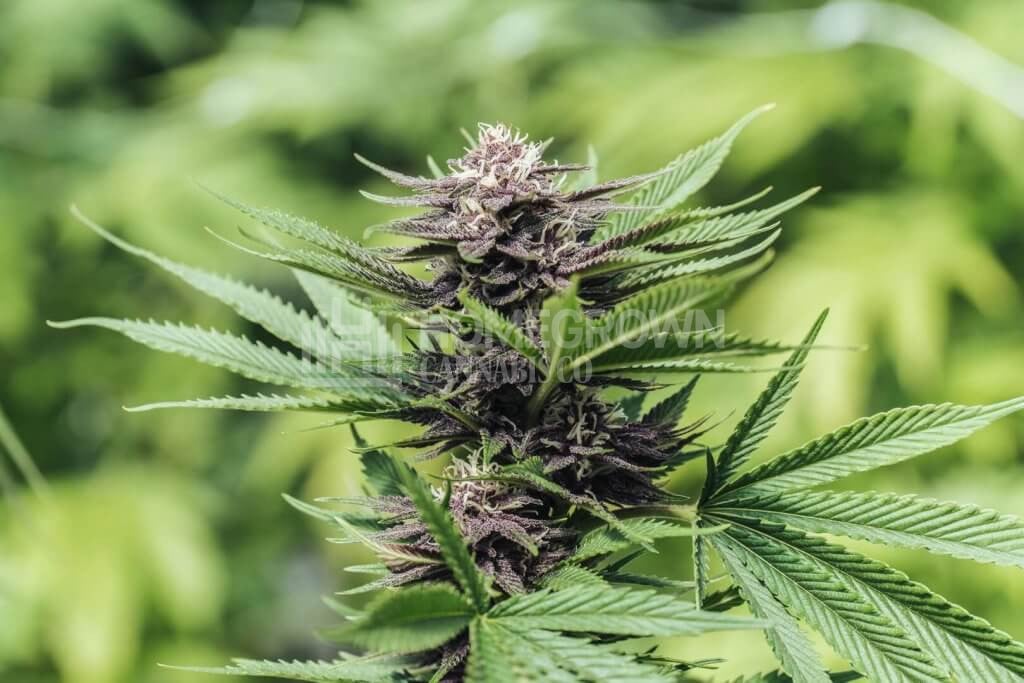The Ultimate Guide To Cannabis Deficiencies
Dedicated Marijuana growers are passionate about their plantations. They know that all the effort they put into cultivating their weed crops yields thrilling benefits. It’s not just about the cannabis seeds you choose. An essential part of growing healthy cannabis plants is knowing when there's a problem - and cannabis deficiencies can be huge problems.
Weed growers must know the symptoms of a stressed cannabis plant and the optimum remedies since they generally can't ask many people for advice.
Cannabis nutrient deficiencies, if left undiscovered, can result in tremendous crop losses and even a complete loss of harvest. Read our ultimate guide to find out about cannabis deficiencies and how to fix them.

What are cannabis deficiencies?
Like other plants, cannabis needs nutrients to live and thrive. The three most essential nutrients are nitrogen, phosphorus, and potassium, often shortened to NPK. If these are missing or the levels are too low, then the plants will have stunted growth and low-quality yields.
Cannabis deficiency happens when the plants don't get the correct amount of nutrients. This opens up your plant to bugs and mold, weakening its structure. You'll notice that your plant develops specific symptoms when it lacks nutrients, the most common being leaf discoloration.
Avoiding deficiencies in cannabis with the optimum pH and nutrient levels
Marijuana bushes can only absorb nutrients efficiently if the grow medium has the correct pH. If the soil is too acidic or alkaline, then certain nutrients won't penetrate the roots.
Overzealous growers think that they need to keep fertilizing their crops, but too much compost material can lead to an unbalanced pH and cannabis deficiencies through nutrient lockout. The pH of your water should typically be between 6.0-7.0. The type of growth medium used will determine its pH.
- Soil: 5.8-6.8
- Hydroponics: 5.5-6.5
If the pH levels are optimal and your plant still shows signs of distress, it may have a cannabis nutrient deficiency.
How to identify cannabis nutrient deficiencies
Keeping an eye on your cannabis plants is the quickest way to pick up any weed deficiencies. If you're new to growing weed, then be sure to watch the color and health of your leaves. The trick is figuring out which nutrient your plant is lacking.
We recommend flushing cannabis soil with water to remove excess nutrients as the first step to restoring health to your plants. It also restores balance to the medium, so there isn't a marijuana nutrient deficiency or excess.
Cannabis deficiency chart
A helpful guide to figuring out what your weed plant is missing is using a Cannabis deficiency chart. It's a visual representation of the various nutrient deficiencies, usually noticeable first on the plant's leaves. The images help to narrow down which nutrient is lacking or in excess.
Macronutrient deficiencies
The three most common deficiencies you’ll notice when exploring the cannabis nutrient deficiency chart are nitrogen, phosphorus, and potassium. These macronutrients need to be present in balanced levels in the medium you're using if you want a healthy yield. Early detection is crucial to address the issue promptly.
Nitrogen deficiency
Nitrogen is an essential nutrient in cannabis plants that promotes chlorophyll production: the basis of photosynthesis. This nutrient is vital during the vegetative growth stage. It also produces critical amino acids that help make up the proteins that boost your plant's health.
A lack of nitrogen is observable in the older leaves, which will go pale and start to turn yellow. If the issue isn't addressed, the leaves will wither and die.
You might not notice the yellowing at the top of the plant, but you'll see it more as you look down towards the base. The bushes will appear to bloom faster but with fewer buds and lower yields.
This is one of the marijuana deficiencies that's difficult to nail down, as an excess in nitrogen levels will cause the leaves to develop an unnaturally deep hue. Since most growers consider a healthy plant to be dark green, this deficiency is challenging to spot.
A quick fix in balancing the level is by using fish-based nutrients high in nitrogen-rich amines. You can also use a light foliar feed spray such as a seaweed one because cannabis leaves can absorb small amounts of nutrients through the surface.
Phosphorus Deficiency
If you're using a hydroponic system, then your cannabis plants are at risk of phosphorous deficiency. The function of this macronutrient is to help your plants grow roots and strengthen the stems and leaves.
It also boosts germination, playing a vital role in the plant's flowering phase. If your crops are lacking phosphorus during this phase, then your yield may be adversely affected.
Your plant growth will slow down quite substantially if there's a phosphorus shortage, appearing lifeless or frail. According to the cannabis leaf chart, the leaves become darker, with the edges dulling and turning brown.
You'll notice that the leaves also start to curl inwards. These symptoms are most likely to appear during the colder months.
To ensure that your plant has the correct nutrient levels, keep the cannabis pH nearer to the acidic side around pH6. This increases the plant’s bioavailability. You can also include worm castings and fish meal in the grow medium.
Keep the temperature stable, as cooler temperatures make it more difficult for effective phosphorus absorption.
Potassium deficiency
Most fertilizers have a relatively low ratio of potassium, making this macronutrient deficiency common. You don’t need levels as high as the other two macros, but it's still vital for the plant.
Potassium is primarily responsible for keeping the crop resistant to most diseases and improving water respiration. It's responsible for water circulation throughout the plant, making it essential for all other processes.
If you study the weed deficiency chart, you'll notice that the potassium deficiency symptoms are a little peculiar. At first, the plant may get a burst of growth and appear healthy, but if you take a look at the lower parts, you'll notice the leaves turning brown. The leaves may even appear burnt at the edges.
Mature cannabis plants could look mottled and yellow in certain areas, but a definite sign is if your plants are brittle and break easily when the wind rocks them. To treat the deficiency, you need to flush the grow medium to ensure that you're not dealing with any other issues.
Use chicken manure as compost on top of your growing medium or another rich nutrient feed. A beneficial nutrient booster is an organic seaweed that can be added to the soil or used as fertilizer.

Other marijuana deficiencies
Besides a lack of the three macronutrients, several other marijuana nutrient deficiencies can assail your beloved cannabis plants. We take a closer look at several of them below, so you know what to watch out for.
Boron deficiency
When combined with calcium, boron is a trace element necessary for cell division and healthy cell walls. If your plant has a boron deficiency, it'll look as though it's wilting. New growth will appear warped, and leaves will morph into a yellowish/brown color.
You can rectify a deficiency by flushing the soil and adding a teaspoon of boric acid to 3-4 liters of water which you then use to feed your cannabis plants.
Iron deficiency
Cannabis deficiencies charts show a lack of iron as a sickly yellowing on the leaves. The growth slows down, and leaves may develop necrosis with a tendency to drop. It's a necessary nutrient that helps produce chlorophyll.
Sometimes the lack of iron is caused by an excess of zinc, copper, or magnesium. Work to boost your plant's health through balanced feeds rather than fix the iron deficiency specifically.
Calcium deficiency
This is an essential secondary nutrient for plant growth and development. It helps the flow of other important cannabis nutrients such as potassium, iron, magnesium, and manganese. If calcium is in short supply, the plant can have stunted growth with some leaf wilting.
It's relatively easy to spot as the lower leaves start to curl and change shape. Also noticeable would be brown or yellow spotting on the foliage. To counter a marijuana deficiency of calcium is quick and straightforward. First, check the pH of your feed and make sure it isn't too alkaline.
If you don't have a supplement, add a teaspoon of hydrated lime to 4 liters of water and use it to feed your weed plants. To prevent future deficiencies, try adding some powdered dolomite lime to your grow medium.
Magnesium deficiency
Magnesium is also a secondary nutrient, but its importance is more significant since photosynthesis can't happen without it. It's a key component in the production of chlorophyll pigment.
You'll find signs of deficiency in the growth of new leaves. Yellow spots appear, which will turn brown and cause the fronds to die.
The older parts of the plant show yellowing in the areas between the veins. If untreated, it’ll decrease your plant's ability to produce a yield. Testing the pH is an excellent way to identify this problem. If it's not within the desired range, flush the plant and prepare a mixture using Epsom salts to feed your crop.
Use a teaspoon of Epsom salts for a liter of water. To prevent magnesium deficiency, make sure that you use good quality compost and include some dolomite limestone in your grow medium.
Molybdenum deficiency
Molybdenum is a mobile micronutrient, and deficiencies are rare. Correcting this cannabis deficiency is difficult. It's an essential nutrient for the function of two enzyme systems. These convert nitrates to ammonium compounds, supporting the production of plant protein.
Symptoms include yellowing of old leaves, which can be aggravated by cold weather. The leaves may curl upwards, forming a cup before twisting and dying. The only way to counter this deficiency is to purchase specialist liquid silicon feed to strengthen the plants rather than fix the issue.
Manganese deficiency
This lesser-known micronutrient is vital for the cell functions within cannabis plants. It includes nitrogen use, photosynthesis, and respiration. The nutrient also aids root cell growth, protecting the bulbs from harmful microbes.
It's unusual to see marijuana deficiencies caused by a shortage of manganese, and any lack is often related to high pH levels or excess iron. Like other deficiency symptoms, you can expect discoloration of leaves near the base of the plant. This can spread to affect the leaves' tips and eventually appear as necrotic spots on older parts of the bush.
Copper deficiency
Copper helps plants use nitrogen and assists in the processing of carbohydrates. It's rare to find copper deficiencies, as most grow mediums and feeds have enough. Slow wilting is one symptom of a shortage, and new growth can appear to twist and turn.
There isn't really a fix for copper deficiency, and the solution lies in its prevention rather than cure. Balancing and maintaining pH levels is essential for a healthy cannabis plant.

Silicon deficiency
If you're growing your cannabis outdoors, then it's unlikely that your cannabis plants will ever show a silicon deficiency. This ailment is usually found in indoor crops. Silicon is abundant in nature and most high-quality fertilizers.
It's needed for plant growth in general, and a deficiency weakens the branches and stems and affects the photosynthesis process.
One sign that your weed plants lack silicon is increased insect activity around the plant since the nutrient deters pests. To combat the shortage, you can buy liquid silicon, but proceed with caution as deficiencies are very rare, and it's more likely that your plants are missing a different nutrient.
Sulfur deficiency
Sulfur is an important micronutrient for vital proteins and enzymes. It's essential to plant respiration and aids in the breakdown of fatty acids. In marijuana plants, it plays a crucial role in synthesizing terpenes and oils. A sulfur deficiency can be blamed on a loss of phosphorus in the roots, usually caused by high pH levels.
The leaves will turn lime green if there's a deficiency, and after a time, they’ll turn yellow. Growth will slow down, and the leaves will become brittle and dry. If the levels continue to be below optimum, then the harvest will have a lower potency and smaller yields.
Zinc deficiency
This metallic nutrient is essential for the production of proteins and sugars. It's also needed for chlorophyll production and healthy stem growth. Deficiencies are more common in dry climates where the soil is alkaline. It could also be a result of acidic pH levels.
Zinc is desirable in small quantities; it’s vital to produce plant growth hormones and proteins. To spot a zinc deficiency, look for interveinal chlorosis on the new leaves. The blades could look wrinkled and distorted, with a yellow tinge. The tips may also show brown burn marks. In severe cases, the leaves could rotate 90 degrees.

Solve cannabis plant deficiencies and keep your crops healthy
The challenge in diagnosing cannabis deficiencies is that all the symptoms look similar. It's difficult to figure out which one nutrient is missing when yellowing leaves are a symptom of almost all ailments. The first step in establishing an unhealthy plant's deficiency is to test the soil's pH levels.
If it's not within the recommended parameters, it's best to flush the grow medium and treat the plant with a balanced water solution. Cultivating a healthy weed plantation requires monitoring the crop to pick up on any changes quickly.
Work on prevention rather than cures since a cannabis nutrient deficiency is often difficult to fix once it appears. Good quality growth medium, cannabis seeds, and feed ensure that your plants get what they need for optimum growth.
About the author: Parker Curtis
Parker Curtis has around a decade of cannabis-growing experience, specialising in soil-less and hydro grows. He’s mastering outdoor, greenhouse, and indoor grows.